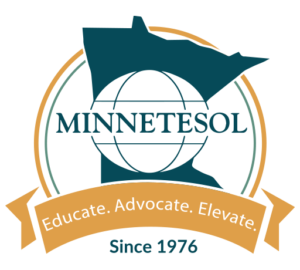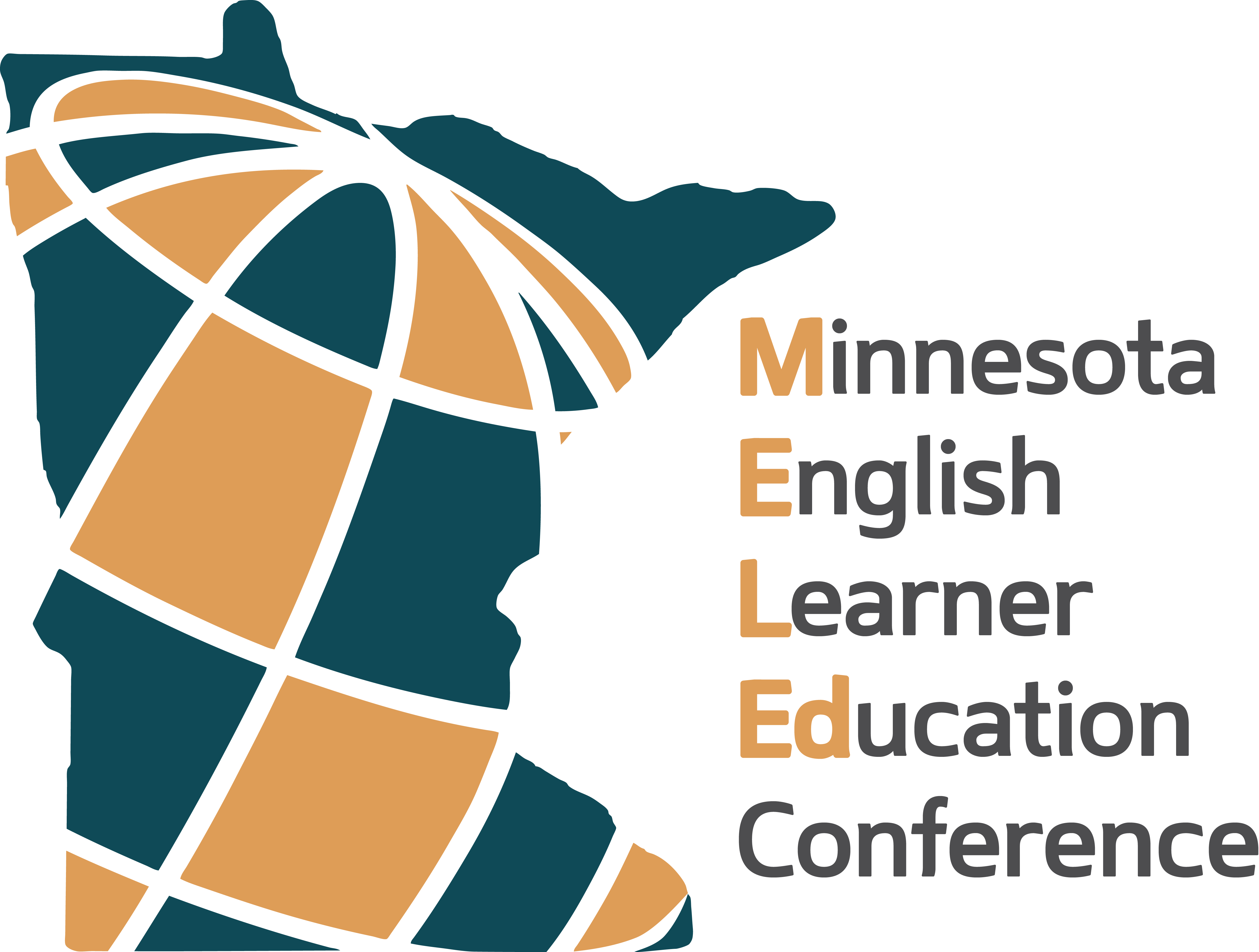Caroline Maguire
ESL teachers often struggle to balance language and content teaching. This article contains ideas for bringing a grammar focus into content-based instruction that will be useful for all teachers, but especially for teachers of middle and high school multilingual students. Key words: Content-Based Language Teaching, Grammar, Focus on Form
Introduction
In the early days of the TESOL profession, most teachers pulled their students out of mainstream classes or offered English instruction in a self-contained, language-focused classroom. Teachers often focused on learning about language in these settings. It wasn’t unusual to see explicit grammar explanations and drills in these ESL classrooms. In the last twenty years, however, things have changed. Due in large part to the underwhelming results of these early models, programs began shifting to push-in, co-teaching, and sheltered models. These models are thought to offer a form of content-based language instruction (CBI), a research-backed (Grabe & Stoller, 1997) approach to language teaching in which language and content are taught concurrently. A central idea of CBI is that language is best learned when used to make meaning, and academic language is best learned when heard and used in academic settings (Brinton, 2010).
As more ESL teachers push into content classes, their focus has shifted from teaching about language to scaffolding the content so that it is accessible to the multilingual students in the class. However, to be most effective, teachers must balance the emphasis on language and on content in a content-based class (Cammarata, Tedick, & Osborn, 2016). As to the correct balance, Nation (2007) suggests that approximately 25% of class time should consist of language-focused learning in which students are attending to, processing, and discussing language features that they will use in the other 75% of the course time.
In their teacher education programs, most ESL teachers are taught to achieve this balance by identifying two kinds of learning objectives: content objectives and language objectives. This practice is directly connected to a content-based approach to language instruction and the need to focus on both content and language. If we are to teach language through content, it is important to articulate both the content that is to be taught (the content objectives), and the language to be taught (the language objectives). Language identified in the language objectives is related to the content and will help students better understand and interact with the big ideas of the content.
After nearly fifteen years of working with new and experienced ESL teachers, my overwhelming experience has been this:
Achieving this balance is hard!
As a profession, we are good at scaffolding. We use many strategies to help our multilingual students access the content, which is, of course, very important. However, teachers often stop there. Furthermore, when they do focus explicitly on language, teachers often limit themselves to vocabulary or to the use of sentences starters or frames, which often help students develop useful chunks of academic language such as “in my opinion,” “in summary,” “for example,” or “in conclusion.” The development of vocabulary and the use of discourse markers such as these is extremely important, and teachers should feel good about using these strategies and should continue to do this. If we are aiming for 25% of our instructional time to be language focused, these kinds of activities certainly count as language-focused. However, at some point we also need to focus on the deeper morphosyntactic structures of language—what we often think of as “grammar.” We need to help students learn the structures that allow, for example, for the creation of complex sentences and the control of the English verb system
I am not advocating a return to the drill worksheets and disconnected grammar lessons of the past. To be effective, the grammar focus should be deeply connected to and blended into the content lesson. This is something that many ESL teachers find difficult to do. It is my hope that this article will acquaint teachers with a few big ideas and introduce some evidence-based strategies that can help them get some new ideas for blending more grammar into their instruction.
Big Ideas
Explicit versus Implicit
An ongoing debate in the research on second language teaching is whether grammar should be taught explicitly at all. There are those who believe that explicitly teaching grammar is a waste of time, as grammar will be acquired implicitly when learners are exposed to comprehensible input. In the 1990’s and early 2000’s, quite a bit of research examined whether overtly focusing on language forms helped learners acquire grammar forms. The majority of this research showed that explicitly teaching grammar forms can help lead to better acquisition of the forms (Ellis, 2002; Norris & Ortega, 2000). Most researchers working in the field now believe some explicit focus is necessary for the development of high levels of proficiency (Ellis, 2008; N. Ellis, 2017). Thus, if teachers wonder, Should I be teaching grammar? the answer, simply put, is yes. The more difficult question, however, is how. Grammar instruction needs to be woven into the other, meaning-focused activities in class. We must always strive for a balance between a focus on meaning and a focus on form. The following ideas are key to achieving this balance.
Salience
One of the most important ideas that ESL teachers should internalize is the importance of raising the level of salience of a language feature. Salience refers to how noticeable something is in the input. Language learners will focus on the pieces of language that provide meaning (lexis) before they will focus on the grammatical aspects of words or sentences. One well known grammar challenge that L2 English speakers have demonstrates this point. The “s” on the end of third person singular verbs adds no meaning to an utterance. Thus, a learner will focus on the part of the verb that has meaning. The “s” has little salience and makes no or little impression in the mind of the learner, going in one ear and out the other, so to speak, as they focus on meaning. Think, too, about the “ed” on the end of a verb to mark past tense. Usually, the context in which such words are found already make clear that the events occurred in the past, so attending to the “ed” isn’t necessary. This is compounded by the fact that “ed” is pronounced as [t], [d], or [id] depending on the final phoneme on the verb. These multiple pronunciations make the form less salient—it doesn’t “pop out” to the learner. They don’t even notice the form.
Noticing
Schmidt’s (1990, 2001) noticing hypothesis is another helpful idea for ESL teachers. This theory is related to the idea of salience, in that Schmidt posited that in order for a learner to acquire a new language form, the learner must first notice that form in the input. In the examples given above, I demonstrated how learners can pull the meaning from language without ever attending to grammatical structures such as the 3rd person singular “s” or the past tense “ed.” It is important to remember, too, that much language is learned in oral/aural interactions and in such interactions, morphosyntactic features often become unclear, swallowed up in oral language. For example, ing becomes in’ or the article a becomes a schwa sound attached to the previous word (e.g., “read a book” becomes “reada book”). Our learners likely aren’t acquiring these forms because they aren’t even noticing them (Roberge, Siegal, & Harklau, 2009).
Here are three examples of sentences written by a college student who spent his entire K-12 career in the United States. They demonstrate how features of language that aren’t salient are often not acquired fully. (The emphasis was added):
…like every other course that I have been taken. …the Math professor assign homework …After few days of class
When we look at sentences like these, it is easy to see how grammatical parts of language, like the difference between “ing” and “en”, the “s” or the article “a” are simply not heard or noticed by L2 English speakers, and thus not fully acquired.
Therefore, as teachers decide how they will bring an explicit focus on grammar to their teaching, it is wise to begin by helping learners to notice the forms. We do this by making the forms more salient so that they stand out to learners.
Strategies to Help Develop Grammar/Forms
There are a number of strategies that teachers can use inside of a content-based lesson that will help students first notice and eventually acquire grammar forms. This section goes through a sequence of activity types that can be blended into content lessons and will lead your students to greater proficiency in the targeted grammar form.
Input Flood
One useful approach to helping students notice a language feature is to raise the number of times the feature appears in the learner’s input. According to Nassaji and Fotos (2011), providing learners with frequent incidences of a target form may help draw learners’ attention to the form. Gass and Selinker (2008) noted that “[s]omething which is very frequent in the input is likely to be noticed” (p. 45). When we manipulate a text that our students are reading or the oral input that we are giving our students so that a targeted form appears more frequently, this is called an input flood. This is an excellent place to start if we want to work on a grammar form. Imagine, for example, that you are targeting a certain verb form. You could write a short summary of a text which reviews an important content concept and use the targeted form far more often that it would normally appear. You might also add sentences to a PowerPoint presentation that all use the targeted form. Finally, you could consciously adjust your speech to use the form more often that you naturally would, to help expose students to the form. While it is possible that some students might acquire the form just from this increased exposure, it might be better to look at an input flood as “priming” students to learn a form. The input flood can help them “get a feel” for the form, but more will still be needed if students are to learn the form.
Here’s an example of an input flood I created for multilingual students learning about landforms.

In this case, I noticed that the participle clause form was used twice in the text to show cause and effect. I also knew that this was a form that the students had not mastered, so I decided that this would be the language objective. The input flood was included in a summary of the main text. It helped the students review the content while also providing an entry point for discussing the language form.
Noticing and Awareness Activities
Lyster (2007) recommended that teachers provide their students with activities that help them notice forms and then become consciously aware of how the forms are made. There are a number of ways that you might help your students notice a specific language form you have targeted.
Input enhancement or textual enhancement is an instructional strategy in which a teacher bolds, highlights, or changes the text of the targeted form in some way to make it more noticeable (Sharwood Smith, 1993). If you have created a modified text to provide an input flood, like the example above, you might also bold or highlight the targeted form. The teacher can also enhance input given orally by adding stress to or pauses around a targeted feature. These kinds of strategies make the feature more salient and help students notice the form.
Here is an example of a PowerPoint slide from the same landform unit. Notice how the target form is bolded:

Students should also be asked to be more active in their noticing of the form. Asking them to find and highlight the forms in a text is an excellent way to help them become more aware of a form. Creating other activities that require that students attend to the form is also important. For example, in the landform unit, students were given an envelope with a number of slips of paper with partial sentences that they were asked to assemble into full, accurate sentences. In order to accomplish this task, they had to pay attention to the language form as well as how the form fits into a sentence. They also, it is important to note, had to use the content knowledge they were acquiring about landforms to successfully complete this activity.

Gibbons (2015) suggests that using a side by side partner dictation activity can help students attend to form. In this activity, each student has the same text but different pieces of the text are missing for each partner. They take turns reading the text out loud, supplying the missing piece for their partner. Students must attend carefully to the forms, both when they are the reader and the writer of the form, so that the correct form of the word can be filled in. Note that once again, this activity focuses on both language and content.
Creating a Student-Friendly Rule
Ultimately, teachers will move beyond these noticing activities and talk with students about the form. Talking about language helps develop students’ metalinguistic awareness, something that is important for language development. Asking students to describe what is happening in the language and helping them to name the forms and create a student-friendly “rule” is appropriate.
Practice
Even if students have been guided to notice forms and articulate explanations for how the form works in language, they will still need to practice if we want them to acquire it as part of their repertoire. Thus, it is important to include activities that ask students to practice producing the form. Practice activities should become more complex and communicative as you move through the unit. As an early practice activity, it might be appropriate to include something very controlled, like a fill in the blank worksheet to practice the form, as long as it requires the students to understand what they are writing. The problem with such exercises isn’t that they are inherently bad. The problem is that teachers have too often overused them or never asked students to go beyond such activities and use the form communicatively. Used in the context of a progression of activities as described here, they can be appropriate and helpful. Ultimately, however, a final product at the end of the unit, perhaps a poster, a presentation, or an essay, should include the form being used in a communicative, creative way by the student.
Fitting It In
The beginning of this article described the changing face of the ESL teacher’s classroom setting. In push-in and co-teaching settings, teachers often have a hard time knowing how to fit grammar teaching into instruction. If the grammar form you are working on is focused mostly on complexity—that is, forms that help students build longer, more precise sentences such as participial phrases, embedded clauses, or complex sentences joined with a subordinating conjunction—these are likely forms that all students in the class could benefit from examining. If the grammatical form focuses more on accuracy—or the avoidance of nonnative-like errors—these are usually not forms that all students will benefit from addressing and should be handled with the multilingual students in the class by using different grouping strategies.
When working in a content class, I recommend building a “language detour” into the lesson. A target form could be included on a PowerPoint slide, used by the teacher in an oral discussion, or present in a text that is being read in class. Ideally the form has shown up multiple times, as the teacher has created an input flood. At some point, the ESL teacher can turn the class’s attention away from the content to the language form, taking a few moments to explicitly discuss language. The ESL teacher might say…
“I keep seeing this certain kind of sentence in the book, let’s look at that together.” Or “Do you notice how this certain kind of sentence has appeared in this PowerPoint several times? Let’s stop for a moment and look at that.” Or “Mr. Co-teacher, you just said the most interesting sentence. I’d like to take a minute to write it on the board and look at it.”
Ideally these “let’s-stop-and-look-at-that-sentence” moments will be followed with a content activity where the students need to use the form to complete the activity.
Providing a language-focused warm up or bell ringer activity is another excellent way to bring a focus on the language form and bring some practice time to the class before shifting to the content focus.
A final way that a focus on grammar can be easily added into a content lesson is by pausing when working on a text to do a form-focused close read of a paragraph or two of the text where a targeted form appears. This would be a good time to highlight or circle the form as it appears in the text. This might happen when the ESL teacher is working with a small group inside a mainstream class. When doing a language-focused close read, it is always good to review other language features you have talked about previously with your students as well.
Revisit, Review, and Reenter
It’s important to remember that language is never learned quickly and completely after a few language-focused lessons. Learners need multiple encounters with words and forms before they internalize them. Heilenman and Kaplan (1985) described different levels of control over language forms that learners pass through as conceptual control, partial control, and finally, full control. Depending on the range of language abilities of your learners, your goals might be for some learners to develop full control while trying to move others into conceptual control.
Teachers should bring forms back and call attention to forms you have already examined over and over throughout the year. Many classrooms have “word walls” where new vocabulary is displayed. Why not have a “writing wall” where specific language forms you have examined together are also displayed?
Right-Sized Language Objectives
Finally, it is important to remember to keep the language learning goals manageable. I will often see teachers describe their language objective as “the past tense” or “complex sentences.” These objectives are far too large to be taught at once and as such, can’t really guide instruction. What part of the past tense will you teach? Regular “ed” forms in affirmative sentences? The pronunciation of the “ed” form ([d], [t], or [id])? A few irregular forms that appear in the content you are focused on? Negation in the past tense? All of these might be part of a cluster of language objectives related to the past tense. In a content-based history class, for example, you could focus on different aspects of the past tense for months. If we return to the example in the landforms unit, it is important to note that after that focus on participle clauses, I certainly didn’t think that students had mastered using participles. In the landform unit, they were used to show cause and effect. Of course, this form is used in English to accomplish many other functions, and the form will need to be reentered and reviewed multiple times to help students move toward acquisition.
Conclusion
Balancing the teaching of language and content is a challenge faced by all language teachers. In push-in and co-taught classes, the balance is too often lost and the content focus dominates. Purposeful and explicit focus on language forms should, however, be woven into these content-based classes. Teachers should work to make language forms more salient and draw their students’ attention to forms in order to help students notice and acquire these language features. A well planned progression of practice activities that move from controlled to communicative can blend content and language teaching, as learners use the targeted form to talk about content.
References
Brinton, D. (2010). Two for one? Language-enhanced content instruction in English for academic purposes. In Proceedings from A TESOL Symposium: Teaching English for Specific Purposes: Meeting our Learners’ Needs. Alexandria, VA: TESOL. Retrieved from http://www.tesol.org/docs/default-source/new-resource-library/symposium-on-teaching-english-for-specific-purpose.pdf?sfvrsn=0
Cammarata, L., Tedick, D. J., & Osborn, T. A. (2016). Content-based instruction and curricular reforms: Issues and goals. In L. Cammarata (Ed.) Content-based foreign language teaching: Curriculum and pedagogy for developing advanced thinking and literacy skills (pp. 1-21). New York: Routledge.
Ellis, N. C. (2017). Implicit and explicit knowledge about language. In J. Cenoz, D. Gorter, & S. May (Eds.) Language awareness and multilingualism. Encyclopedia of language and education (3rd ed.) (pp. 113-124). Springer, Cham.
Ellis, R. (2002). Does form-focused instruction affect the acquisition of implicit knowledge? Studies in Second Language Acquisition, 24(2), 223-236. https://doi.org/10.1017/S0272263102002073
Ellis, R. (2008). Principles of Instructed Second Language Acquisition. CAL Digest. Retrievable from http://www.cal.org/resource-center/resource-archive/digests
Gass, S., & Selinker, L. (2008). Second language acquisition: An introductory course. New York: Routledge.
Gibbons, P. (2015). Scaffolding language, scaffolding learning: Teaching English language learners in the mainstream classroom. Portsmouth, NH: Heinemann.
Grabe, W., & Stoller, F. L. (1997). Content-based instruction: Research foundations. In M. A. Snow & D. M. Brinton (Eds.), The content-based classroom: Perspectives on integrating language and content (pp. 5–21). White Plains, NY: Longman.
Heilenman, L. K., & Kaplan, I. M. (1985). Proficiency in practice: The foreign language curriculum. In C. J. James (Ed.), Foreign language proficiency in the classroom and beyond (pp. 55-77). Lincolnwood, IL: National Textbook Co.
Lyster, R. (2007). Learning and teaching languages through content: A counterbalanced approach. Amsterdam Philadelphia: John Benjamins Pub.
Nassaji, H., & Fotos, S. (2011). Teaching grammar in second language classrooms: Integrating form-focused instruction in communicative context. New York, NY: Routledge.
Nation, P. (2007). The four strands. Innovation in Language Learning and Teaching, 1(1), 2–13. https://doi.org/10.2167/illt039.0
Norris, J., & Ortega, L. (2000). Effectiveness of L2 instruction: A research synthesis and quantitative meta-analysis. Language Learning, 50(3), 417–528. https://doi.org/10.1111/0023-8333.00136
Roberge, M., Siegal, M., & Harklau, L. (2009). Generation 1.5 in college composition: Teaching academic writing to U.S.-educated learners of ESL. New York: Routledge.
Schmidt, R. (1990). The role of consciousness in second language learning. Applied Linguistics, 11(2), 129-158. https://doi.org/10.1093/applin/11.2.129
Schmidt, R. (2001). Attention. In P. Robinson (Ed.), Cognition and second language instruction (pp. 3-32). Cambridge: Cambridge University Press.
Sharwood Smith, M. (1993). Input enhancement in instructed SLA. Studies in Second Language Acquisition, 15(2), 165-179. https://doi.org/10.1017/S0272263100011943










